Menu
Frida Kahlo and Diego Rivera
from the Jacques and Natasha Gelman Collection 25 Jun – 23 Oct 2016
La revolución!
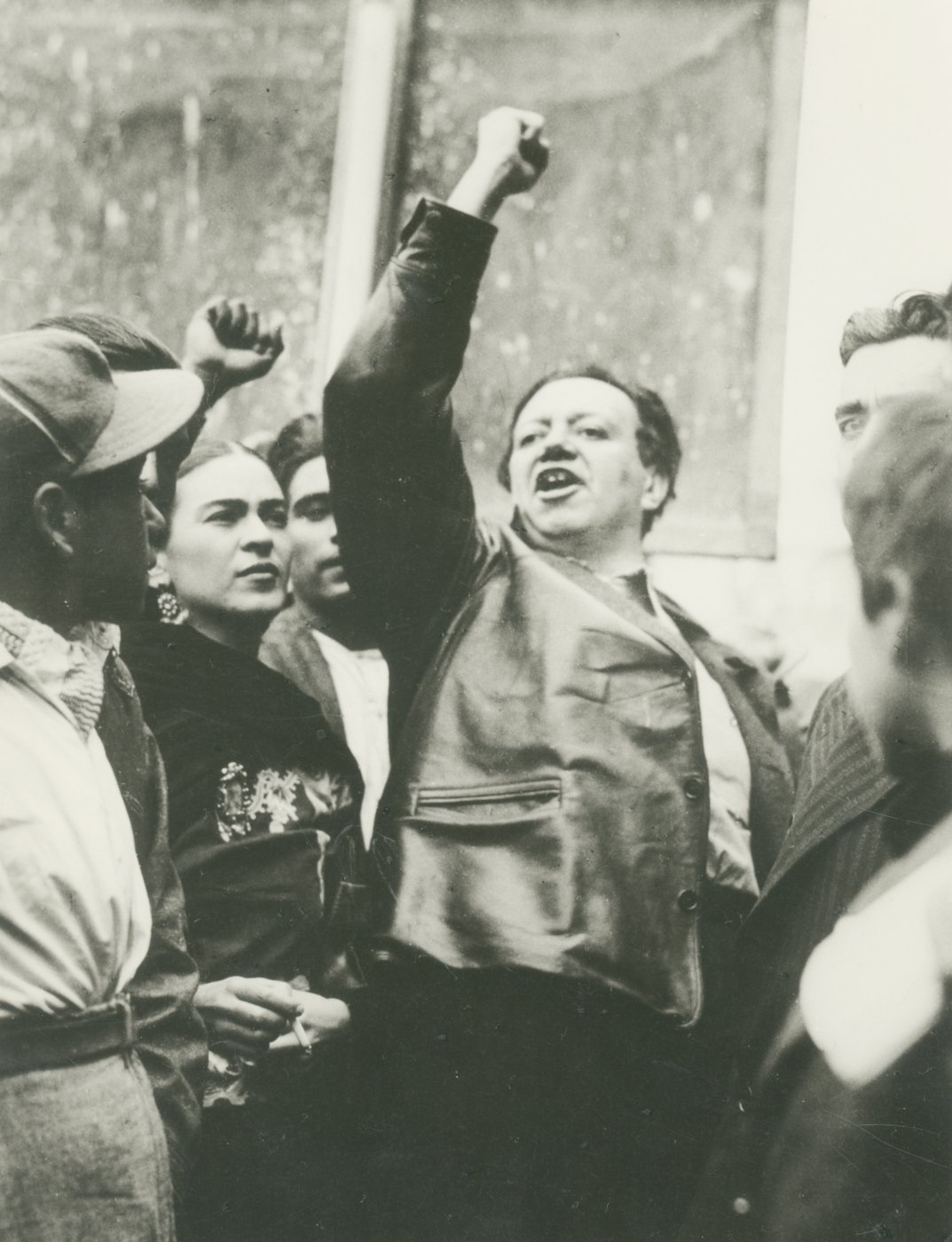
Photographer unknown, 'Frida and Diego during a Mexican Labor anti-fascist demonstration in Mexico City', 1936
The turn of the 20th century in Mexico was a time of radical change. For artists Frida Kahlo and Diego Rivera, the opportunity to participate in the rebuilding of a new Mexico was irresistible.
With the Mexican Revolution came a shift in thinking about culture and, politically, a widespread acceptance of socialism. Frida and Diego were very much a part of a Marxist political, cultural and social framework that helped Mexico redefine its identity in the first decades of the new century.
Enlarge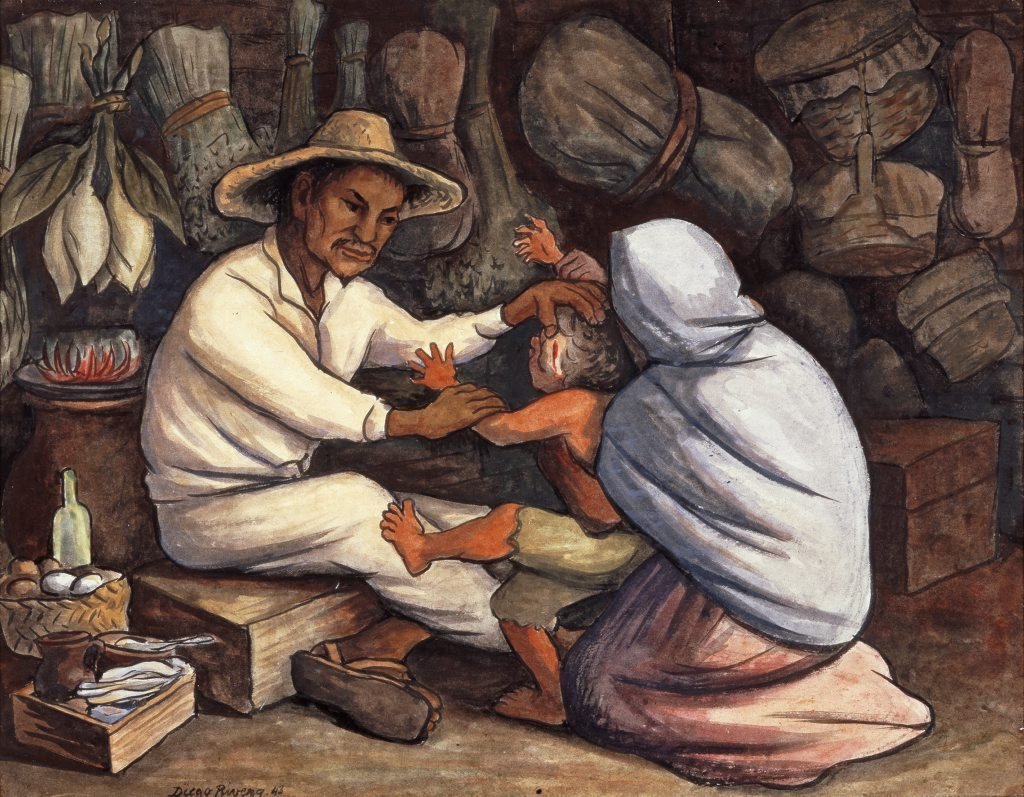
Diego Rivera, 'The healer', 1943
The decades before the revolution had been marked by political chaos following the Mexican War of Independence that had freed the country from Spanish rule in 1821.
Porfirio Díaz became president in 1876 and ruled for 34 years, a period known as the Porfiriato. Though he modernised the country and brought economic growth and stability – his motto was ‘Order and Progress’ – Díaz had effectively become a dictator of a profoundly unequal country.
Though supported by an increasingly wealthy middle class, Díaz’s focus on foreign land ownership had pushed farmers and indigenous peoples from their land and mass poverty had become a defining feature of life.
Enlarge
Diego Rivera, 'Sunflowers', 1943
In 1910 – while Diego was away in Europe and Frida was only 3 years old – revolution finally exploded and a corrupt President Díaz was toppled from power.
Ten years of highly unstable government followed, with rapid political turn-over, and multiple exiles and assassinations.
What had begun as mixed unrest between competing middle-class alliances, coupled with a growing agrarian labour movement, soon became a series of violent civil wars. In the bitter infighting between rebel forces, many from regional states, between one and two million Mexicans died.
Enlarge
Juan Guzmán, 'Frida and Diego by mural 'The nightmare of war, dream of peace' in the Palace of Fine Arts, Mexico', 1952
After the most militant phase of the revolution was over, Mexico started the process of redefining itself. The revolution had become a call to nationalism, and a cultural renaissance was about to take place.
Artists, intellectuals and the cultural elite all become involved in developing this new identity for Mexico; new institutions, new art, and new access to learning for the masses.
In 1920, the Ministry of Education was set up with cultural ideologue José Vasconcelos at the helm.
Vasconcelos recruited artists into service for a new centralized, nationalistic cultural program. Government-sponsored murals were painted in churches, schools, libraries, and public buildings in a glorious moment of post-revolutionary fervour.
Enlarge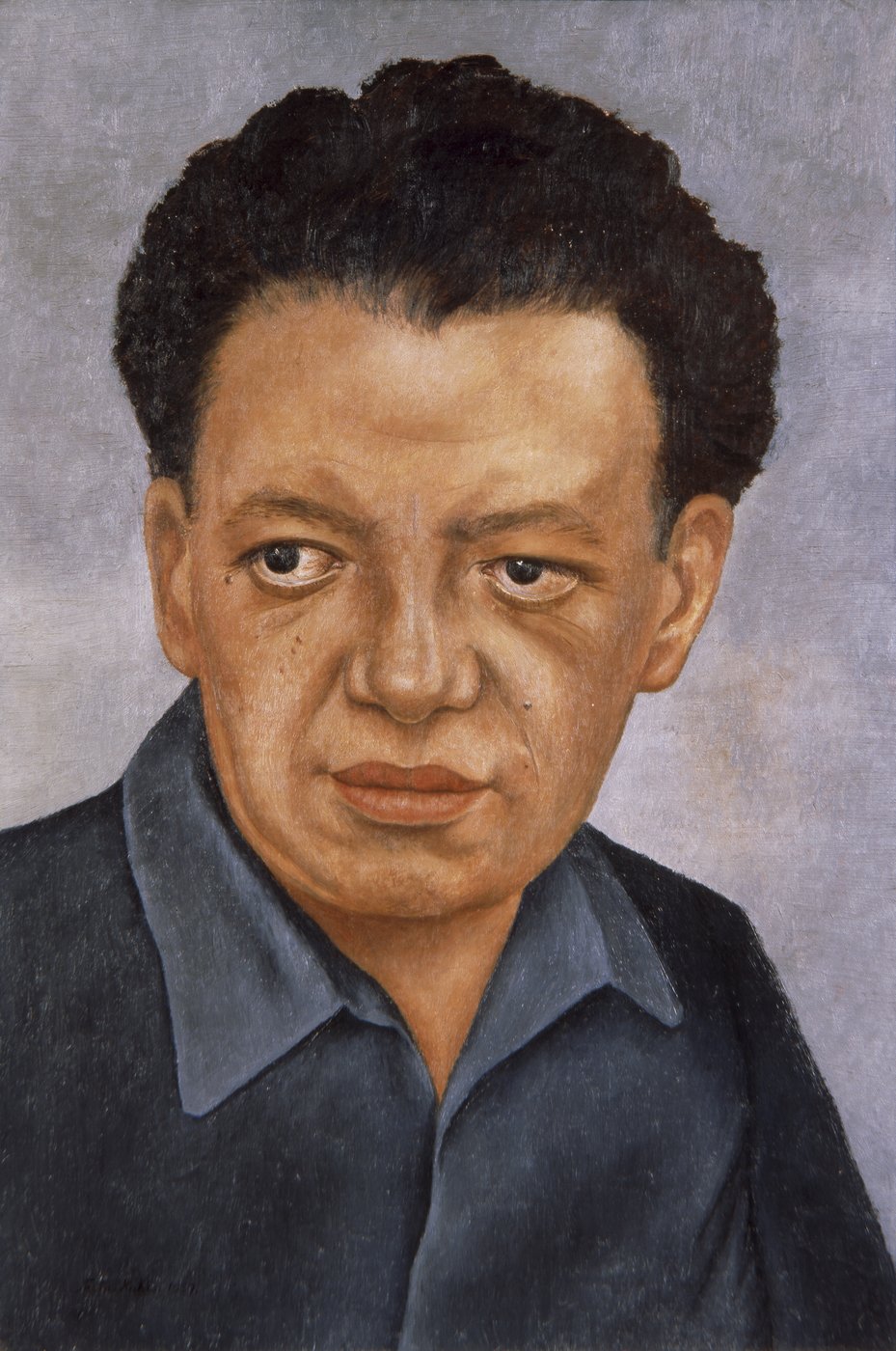
Frida Kahlo, 'Portrait of Diego Rivera', 1937
Called home from Italy where he was studying Renaissance frescoes – techniques he will later employ in a new avant-garde monumental painting – Diego attempted to define a new Mexican art that revived folk art and broke from the dominant academic art.
With fellow artists, Diego wrote manifestos calling for a monumental art for the people, and later helped form avant-garde movements like the League of Revolutionary Artists and Writers (LEAR).
Diego, David Alfaro Siqueiros and José Clemente Orozco become the leading figures – Los tres grandes – of this new, revolutionary Mexican school of painting.
Enlarge
Martin Munkacsi, 'Diego and Frida', 1934
Many members of the cultural and intellectual elite involved in creating the new post-revolutionary Mexico were liberal socialists; Marxists, if not card-carrying Communists.
Mexico’s revolution had become a model for the Bolsheviks in Russia in 1917, and strong bonds had developed between the two countries’ communist parties.
As committed activists, Diego and Frida formed close personal ties to many of the era’s most significant political players. For the rest of their lives, they would produce art formed from their Marxist beliefs: Diego the grand revolutionary nationalistic murals, and Frida the intimate yet explosive portraits that would redefine the personal as political.
Enlarge
Photographer unknown, 'Diego observing Frida paint 'Self-portrait on the borderline', Detroit', 1932
Whilst Diego was in Europe on a government scholarship – travelling and studying in Spain then based in Paris – he missed the revolution at home.
Though Diego told people he fought on the front lines with peasant leader Zapata’s forces, it was only after his return in 1921 that he made his mark on Mexico.
In 1922, round the time he was working on the first of his major murals – Creation, in the Simón Bolívar Amphitheatre of the National Preparatory School – Diego joined the Mexican Communist Party.
Later he will sit on the Party’s executive committee.
Enlarge
Florence Arquin, 'Untitled (Frida Kahlo wearing a plaster cast, which she decorated with the hammer and sickle)', c1950
Like Diego, Frida also came up with a fanciful response to this political zeal. Born in 1907, she claimed her birthdate as 1910 – the year of the revolution.
Though her work took a different form to the country’s dominant style – social realism – she was a deeply committed political artist.
It’s often said that Frida came to politics through Diego, but before they’d met and she was still at school, she was already a member of Los Cachuchas, a political youth group supporting socialist-nationalist ideas led by her boyfriend Alejandro Gómez Arias.
Her friends included the Italian photographer and political activist Tina Modotti.
Enlarge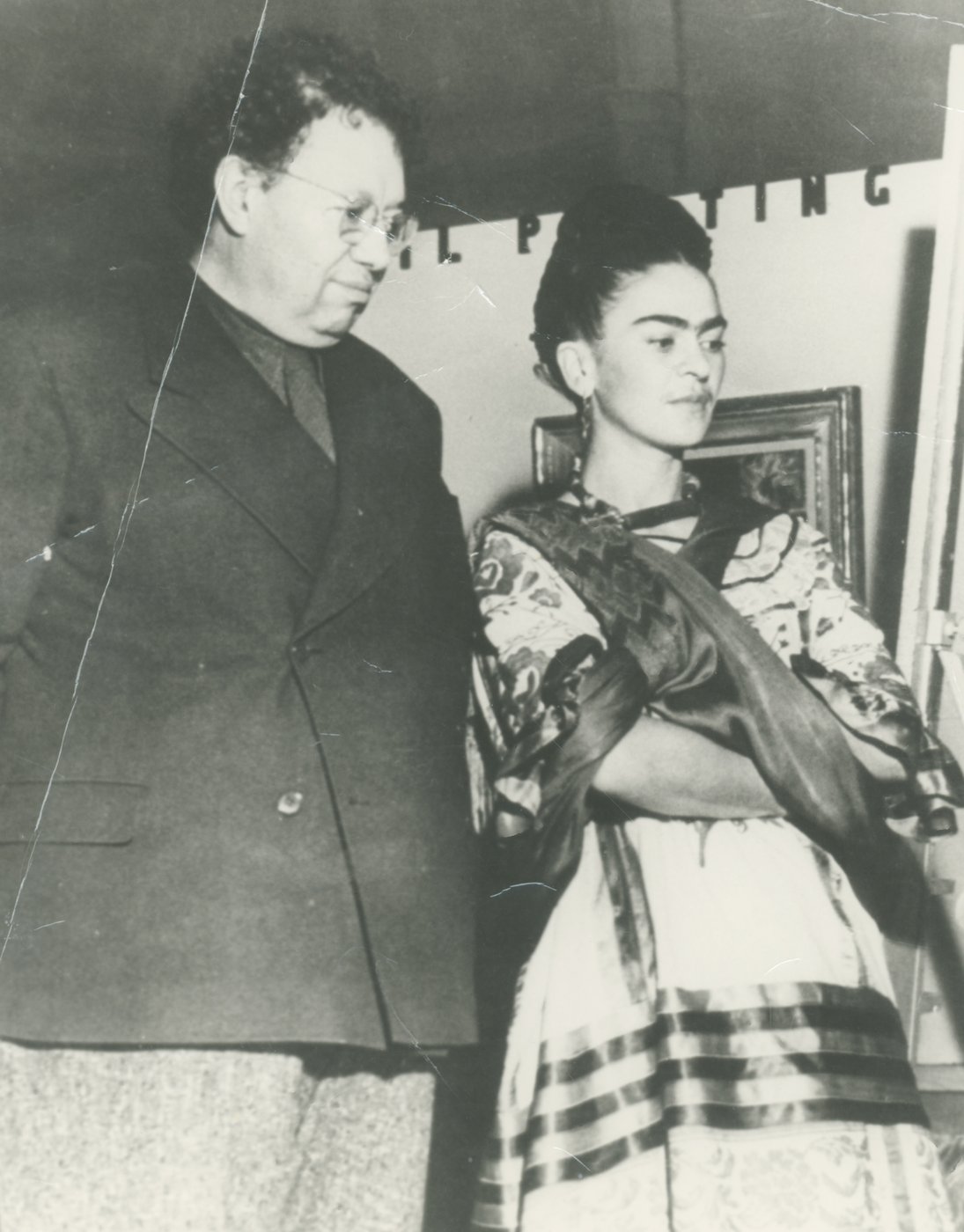
Photographer unknown, 'Untitled (Diego and Frida)', c1930
In 1927, Frida had joined the Young Communist League and by 1928, the Mexican Communist Party.
1928 was also the year Frida meets Diego again, having watched – and teased – him as he painted at the National Preparatory School years before. As they fell in love, he saw her as a fellow fighter for communism.
In The Arsenal, part of his Ballad of the Revolution mural cycle at the Ministry of Education, Diego depicted Frida wearing a red blouse and a star on her breast, distributing weapons for the revolutionary struggle.
Enlarge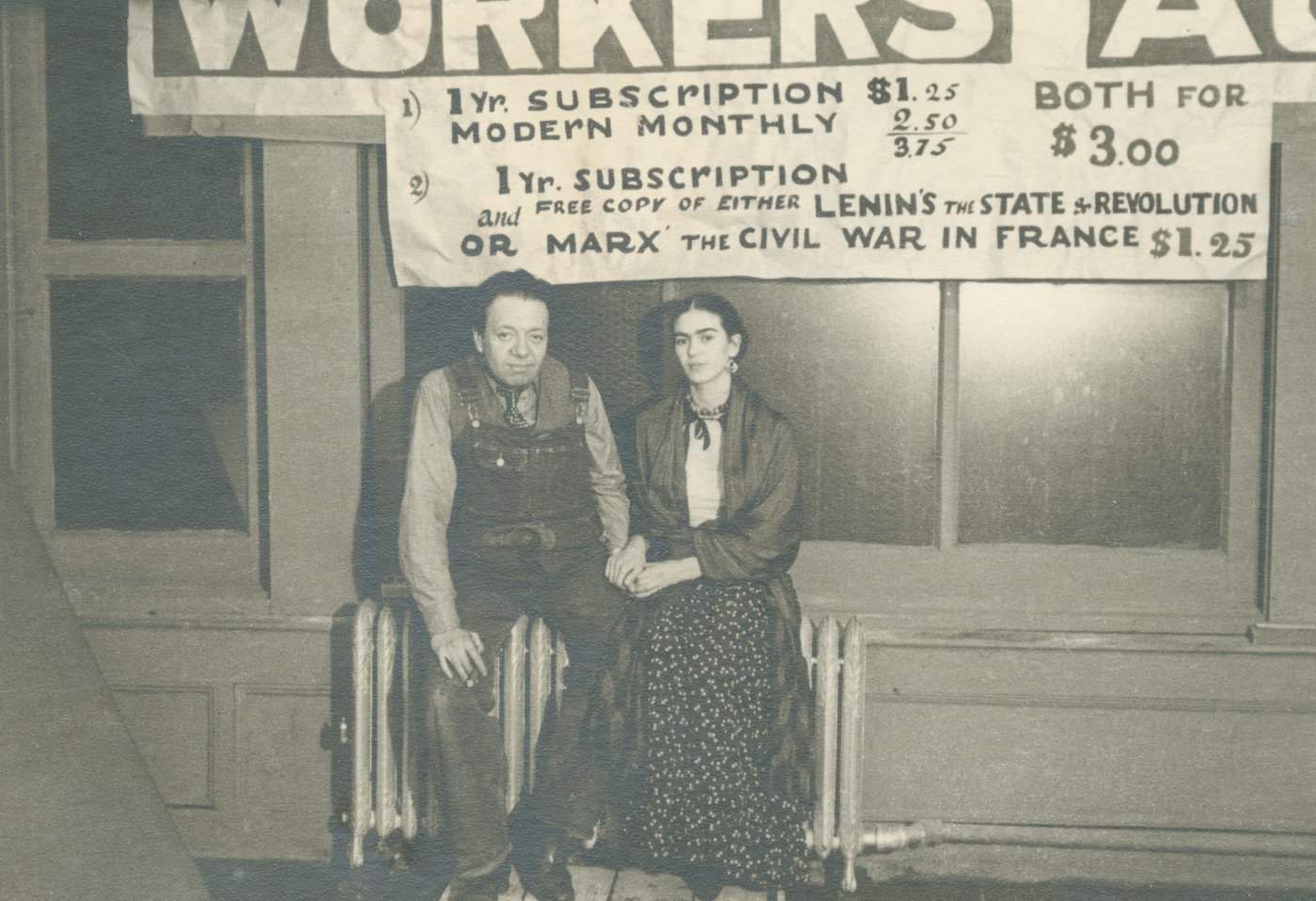
Lucienne Bloch, 'New Workers School, NYC', 1933
Communism had a popular hold in the west: a party had formed in the US in 1919, and in Australia a year later. But by the end of the 1920s, with its anarchist elements seen as an increasing threat, communism was in rapid decline around the world.
Diego remained committed: in 1927 he was invited to the Soviet Union to take part in official celebrations for the Tenth Anniversary of the October Revolution.
In 1929, the Mexican Communist Party was banned, not to be legalised again until 1935 when its threat had already passed.
Enlarge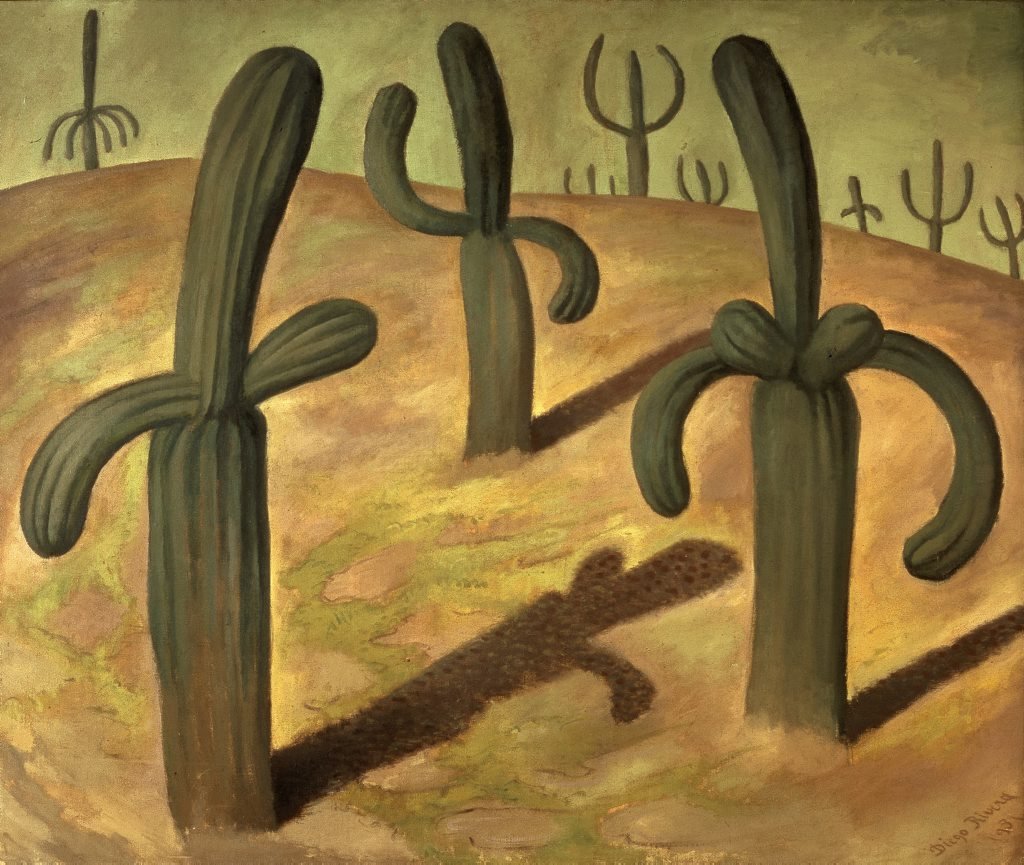
Diego Rivera, 'Landscape with cacti', 1931
In 1929, Diego began a mural cycle for the National Palace of Fine Arts, and accepted a commission from the US Ambassador Dwight W. Morrow to paint a mural in Cuernavaca. Seen as having colluded with an anti-Communist regime, he was expelled from the Communist Party.
In August of 1929, Frida and Diego were married. By the end of the year she had resigned from the Communist Party in protest at Diego’s expulsion.
During the 1940s, Diego made several requests to re-join the Communist Party, but he was not readmitted until September 1954.
Enlarge
Diego Rivera, 'Emmy Lou Packard and Frida Kahlo in Coyoacán', 1941
The 1930s saw Diego and Frida making art that was radical, innovative and politically engaged.
They moved to America when Diego was offered several commissions. In San Francisco, Philadelphia to Detroit and New York, Diego painted socialist murals for a receptive US audience.
While fascism was on the rise in Europe, US President Roosevelt introduced his foreign policy initiative with Latin America, the ‘Good Neighbor Policy’.
This came at a time of conflicting positions: while Mexican muralism was an inspiration to many leftist American social realist artists, politically there was a growing fear of communism.
Enlarge
